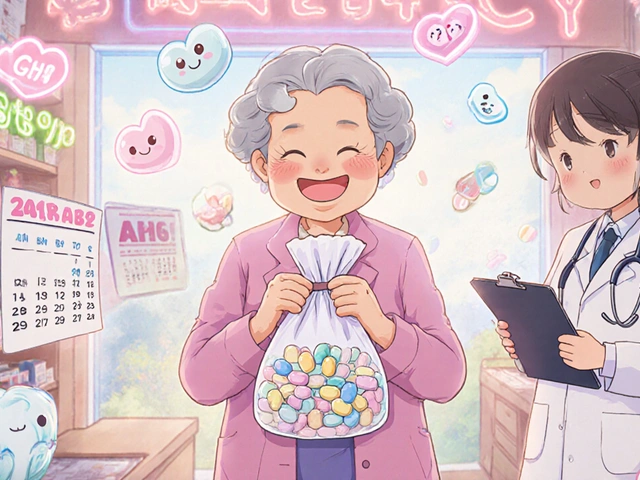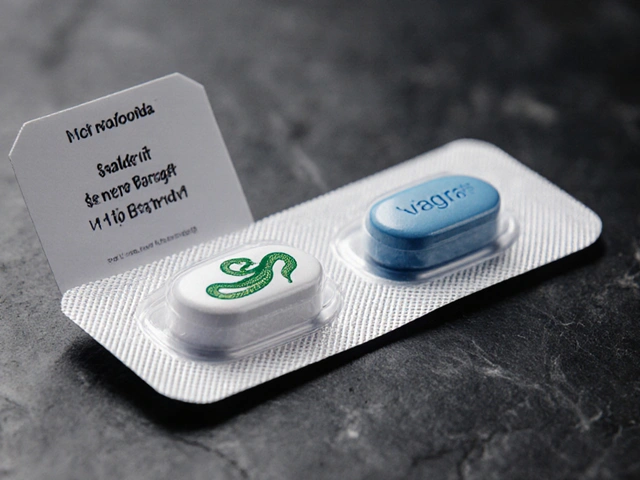Every year, millions of people take generic drugs without knowing they might be swallowing something dangerous. These aren’t just cheap copies-they’re fake. And they’re slipping into the supply chain in ways most patients and even pharmacists can’t detect. The problem isn’t going away. In fact, it’s getting smarter.
How fake drugs are made
Counterfeit generic drugs don’t appear out of thin air. They’re made in hidden factories, often in countries with weak oversight like parts of Southeast Asia, Eastern Europe, and West Africa. These aren’t some amateur operations. They use commercial-grade printers to copy packaging with 95% accuracy. The blister packs, labels, even the font size and color? Nearly identical to the real thing. Some counterfeiters go further-they don’t just mimic the look. They replicate the chemical structure of the active ingredient closely enough to fool basic lab tests. The goal? Profit. A single bottle of fake blood pressure medication can cost $0.05 to produce but sell for $10. That’s a 20,000% markup. The global market for fake pharmaceuticals is estimated at $200 billion annually. And the most targeted drugs? The ones people rely on to stay alive: antibiotics, antimalarials, heart meds, and cancer treatments. Take the 2008 heparin crisis. A Chinese supplier contaminated raw heparin with a toxic industrial chemical. It made its way through multiple intermediaries, ended up in U.S. hospitals, and killed 149 people. That wasn’t a scam-it was a failure of oversight. And it showed how easily a single tainted batch can poison an entire supply chain.How fake drugs get into legitimate channels
You might think pharmacies and hospitals are safe. But counterfeits don’t need to break in-they often walk right through the front door. There are three main routes:- Parallel importation: Drugs bought legally in one country (where prices are lower) are resold in another without authorization. Regulators in the destination country often can’t verify if those drugs are real or have been tampered with during transport.
- Grey market sales: Unauthorized distributors buy bulk legitimate drugs, mix in fakes, and sell them to smaller pharmacies or clinics. The real and fake products look the same. No one notices until patients don’t get better-or get sicker.
- Online pharmacies: The biggest threat today. The National Association of Boards of Pharmacy found that 95% of online pharmacies operating without a license are selling counterfeit drugs. Many look like real medical sites. They use fake certifications, professional logos, and even fake doctor endorsements. You order Lipitor, and you get a pill that looks right but contains chalk, rat poison, or nothing at all.
Why generics are the main target
Generic drugs make up over 80% of all prescriptions filled in the U.S. and Europe. They’re cheaper, widely used, and often produced by dozens of manufacturers across the globe. That creates chaos. When a brand-name drug’s patent expires, dozens of companies start making the same pill. The original manufacturer no longer controls the supply. That’s good for patients-it lowers prices. But it also means there are more entry points for fraud. Counterfeiters exploit this. They don’t need to fake the brand-name drug. They fake the generic version, which is harder to track. A fake version of metformin (a common diabetes drug) might be sold under 15 different names across 10 countries. No one’s keeping a master list. The 2018 recalls of angiotensin II receptor blockers (ARBs) showed another vulnerability. The impurities that caused cancer risks didn’t come from rogue factories-they came from poorly controlled chemical synthesis during generic production. That’s not counterfeiting, but it’s the same kind of failure: lack of oversight. And it opened the door for even worse fraud.
How to spot a fake drug
Most people don’t know what to look for. But there are signs-if you know where to look.- Packaging differences: Check the font, spacing, or logo alignment. Even slight misalignments can be a red flag. Some fakes have misspelled words or incorrect expiration dates.
- Physical appearance: Does the pill look different? Wrong color? Wrong shape? Wrong scoring? One Reddit user found counterfeit Lipitor with a different tablet score and inconsistent color. Lab tests later showed it had no active ingredient.
- Unusual side effects: If you’ve been on a drug for years and suddenly feel worse, dizzy, or nauseous, it could be the medicine. Talk to your pharmacist. Don’t assume it’s your body changing.
- Where you buy: Never buy pills from websites that don’t require a prescription. If a site offers “discounted” brand-name drugs without a doctor’s note, it’s almost certainly fake.
What’s being done-and what’s not
Some progress is being made. The EU’s Falsified Medicines Directive, which came into full effect in 2019, requires every medicine package to have a unique identifier and a tamper-evident seal. Since then, counterfeit penetration in Europe has dropped by 18%. That’s real progress. In the U.S., the Drug Supply Chain Security Act (DSCSA) requires full traceability by 2023. But implementation has been slow. Many small pharmacies still rely on paper records. And there’s no global standard. A drug made in India, shipped through Dubai, sold in Nigeria, and bought online by someone in the UK? No one system tracks it all. Tech solutions exist. DNA tags, chemical tracers, holograms-some companies embed invisible markers that only special scanners can read. But these cost $0.02 to $0.05 per unit. For a $1 generic drug, that’s a 5% cost increase. Many manufacturers won’t pay it. Especially in low-income countries where patients can barely afford the real drug, let alone a secure version. Big pharma is fighting back. Pfizer has blocked over 302 million counterfeit doses since 2004 by working with customs, pharmacies, and law enforcement. But they’re fighting a war with a million fronts.What you can do
You can’t stop counterfeits alone. But you can protect yourself.- Always get prescriptions filled at licensed pharmacies. Check your state’s board of pharmacy website to verify the pharmacy’s license.
- Ask your pharmacist to show you the original packaging if you’re unsure. Compare it to previous bottles.
- Report suspicious drugs. In the U.S., report to the FDA’s MedWatch program. In the UK, use the Yellow Card system.
- Never buy drugs online unless the site is verified by the National Association of Boards of Pharmacy (NABP). Look for the VIPPS seal.
- If you’re traveling, bring enough medication for your trip. Don’t buy local unless you’re certain of the source.
What’s next
The next wave of counterfeiting is already here. AI-generated packaging can now mimic holograms and security features so well that human inspectors can’t spot the difference. Europol seized a shipment of fake cancer drugs in early 2023 with AI-perfected labels that passed visual inspection. Without global coordination, the problem will only grow. The OECD predicts counterfeit drugs could make up 5-7% of global medicine sales by 2030. That’s not a future scare-it’s a forecast. The solution isn’t just better tech. It’s better laws. Better enforcement. Better transparency. And it starts with asking one simple question: How do I know this medicine is real? If you can’t answer it, you’re taking a risk.How common are fake generic drugs?
In developed countries, fake drugs make up about 1% of the supply chain. But in low- and middle-income countries, that number can jump to 30% or higher. Africa alone accounts for 42% of all falsified medicines globally. Generic drugs are the most common target because they’re widely used, cheaper, and harder to track than brand-name drugs.
Can I tell if my medicine is fake just by looking at it?
Sometimes, but not always. Counterfeiters now use high-quality printers and materials that make fake packaging nearly identical to the real thing. Look for small inconsistencies: misspelled words, wrong color, different tablet shape or scoring, or packaging that feels flimsy. But many fakes pass visual inspection. The only sure way is through lab testing or verifying the product’s unique identifier through a trusted track-and-trace system.
Are online pharmacies safe to buy from?
Almost all online pharmacies that don’t require a prescription are illegal and sell counterfeit drugs. The National Association of Boards of Pharmacy found that 95% of online pharmacies operate without proper licensing. Only use sites with the VIPPS seal, which means they’ve been verified by U.S. regulators. Even then, check the pharmacy’s physical address and contact information. If it’s missing, walk away.
Why are counterfeit drugs so dangerous?
They can contain nothing at all, toxic chemicals, or the wrong dose of active ingredient. A fake malaria drug might have only 10% of the needed artemisinin, leading to treatment failure and drug-resistant strains. Fake antibiotics can cause deadly infections to spread. In 2008, contaminated heparin from China killed 149 people in the U.S. Fake drugs don’t just fail to work-they can kill you.
What’s being done to stop fake drugs?
Some countries are improving. The EU’s Falsified Medicines Directive requires unique identifiers and tamper-proof seals on all prescription drugs. The U.S. Drug Supply Chain Security Act aims for full traceability by 2023. Companies like Pfizer and MediLedger use blockchain and DNA tagging to track drugs. But enforcement is uneven. Only 22 of 194 WHO countries have full track-and-trace systems. Without global standards, counterfeiters will keep finding gaps.
Can AI make fake drugs harder to detect?
Yes. In early 2023, Europol seized counterfeit cancer drugs with AI-generated packaging that perfectly replicated holograms and security features. These fakes passed visual inspections by customs agents. AI can now mimic tiny details like ink texture, label alignment, and even batch number patterns. This means human inspectors alone can’t keep up. Detection now requires digital verification systems, not just eyes.







JAY OKE
November 26, 2025Man, I just checked my blood pressure pills last week. Looked fine. Now I’m staring at the bottle like it’s going to whisper secrets to me. Scary how good these fakes are now.